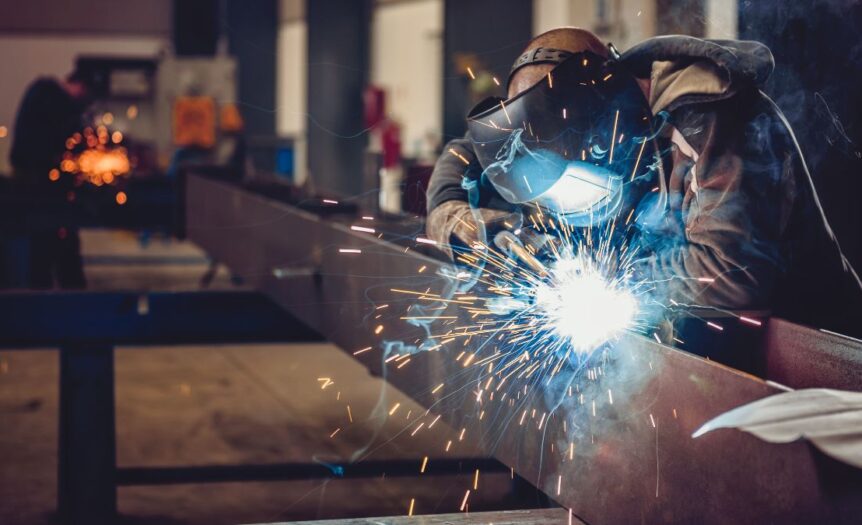In the dynamic world of metalworking, achieving finesse in the final product is as essential as ensuring the safety of the craftsmen behind it. The very nature of metalworking, with its high-speed machinery and sharp tools, mandates stringent safety measures. These safety protocols in metalworking shops stand out as the bedrock of secure and efficient operations in the metalworking industry.
Proper Attire and Personal Protective Equipment (PPE)
Craftsmanship and safety go hand in hand. When working amidst metals and machinery, wearing the right attire is non-negotiable. This means ditching loose clothing that could get caught in machines and donning safety goggles, gloves, and steel-toed boots. Helmets or face shields might also be required depending on the specific task. Prioritizing PPE minimizes risks and protects artisans throughout the metalworking process.
Regular Maintenance and Machine Inspection
The heart of metalworking is its machinery. Ensuring these machines are well-maintained is pivotal for safety. Regularly inspecting them for wear and tear and promptly addressing any identified issues can prevent potential hazards. Moreover, machines should be kept clean and free from accumulated debris or metal shavings, which could cause unexpected jams or malfunctions.
Training and Workstation Organization
Even the most advanced machinery can pose risks if operated without adequate knowledge. Proper training for every craftsman is crucial. This encompasses not just the operation of machinery but also understanding emergency shutdown procedures. Coupled with this, an organized workstation where tools are neatly stored further eliminates potential hazards, ensuring a streamlined and safe working environment.
Clamping and Tooling Features
Clamping and tooling play a crucial role in securely holding materials during metalworking processes. Clamping materials firmly prevents them from moving unexpectedly, which could lead to accidents or damage. Tooling features, like sharp edges or specific designs, should be handled carefully. Emphasizing the importance of correct clamping and meticulous tooling management can significantly reduce potential injuries and mishaps.
Now that you know these safety protocols in metalworking shops, it’s clear that a blend of training, proper equipment, and mindfulness form the foundation of a secure metalworking environment. These timeless safety protocols remain the cornerstone as the industry continues to evolve, ensuring artistry is always in harmony with safety.










 Deering Estate
Deering Estate
 Massage Envy South Miami
Massage Envy South Miami
 Calla Blow Dry
Calla Blow Dry
 My Derma Clinic
My Derma Clinic
 Sushi Maki
Sushi Maki
 Sports Grill
Sports Grill
 The Healthy Kitchen
The Healthy Kitchen
 Golden Rule Seafood
Golden Rule Seafood
 Malanga Cuban Café
Malanga Cuban Café

 Kathleen Ballard
Kathleen Ballard
 Panter, Panter & Sampedro
Panter, Panter & Sampedro
 Vintage Liquors
Vintage Liquors
 The Dog from Ipanema
The Dog from Ipanema
 Rubinstein Family Chiropractic
Rubinstein Family Chiropractic
 Your Pet’s Best
Your Pet’s Best
 Indigo Republic
Indigo Republic




 ATR Luxury Homes
ATR Luxury Homes


 2112 Design Studio
2112 Design Studio
 Hamilton Fox & Company
Hamilton Fox & Company
 Creative Design Services
Creative Design Services
 Best Pest Professionals
Best Pest Professionals
 HD Tree Services
HD Tree Services
 Trinity Air Conditioning Company
Trinity Air Conditioning Company
 Cisca Construction & Development
Cisca Construction & Development
 Mosquito Joe
Mosquito Joe
 Cutler Bay Solar Solutions
Cutler Bay Solar Solutions


 Miami Royal Ballet & Dance
Miami Royal Ballet & Dance
 Christopher Columbus
Christopher Columbus
 Pineview Preschools
Pineview Preschools
 Westminster
Westminster
 Carrollton
Carrollton
 Lil’ Jungle
Lil’ Jungle
 Frost Science Museum
Frost Science Museum
 Palmer Trinity School
Palmer Trinity School
 South Florida Music
South Florida Music
 Pinecrest Orthodontics
Pinecrest Orthodontics
 Dr. Bob Pediatric Dentist
Dr. Bob Pediatric Dentist
 d.pediatrics
d.pediatrics
 South Miami Women’s Health
South Miami Women’s Health

 The Spot Barbershop
The Spot Barbershop
 My Derma Clinic
My Derma Clinic




 Miami Dance Project
Miami Dance Project

 Rubinstein Family Chiropractic
Rubinstein Family Chiropractic
 Indigo Republic
Indigo Republic

 Safes Universe
Safes Universe
 Vintage Liquors
Vintage Liquors
 Evenings Delight
Evenings Delight





 Atchana’s Homegrown Thai
Atchana’s Homegrown Thai
 Baptist Health South Florida
Baptist Health South Florida

 Laser Eye Center of Miami
Laser Eye Center of Miami
 Visiting Angels
Visiting Angels
 OpusCare of South Florida
OpusCare of South Florida

 Your Pet’s Best
Your Pet’s Best





 HD Tree Services
HD Tree Services
 Hamilton Fox & Company
Hamilton Fox & Company


 Creative Design Services
Creative Design Services